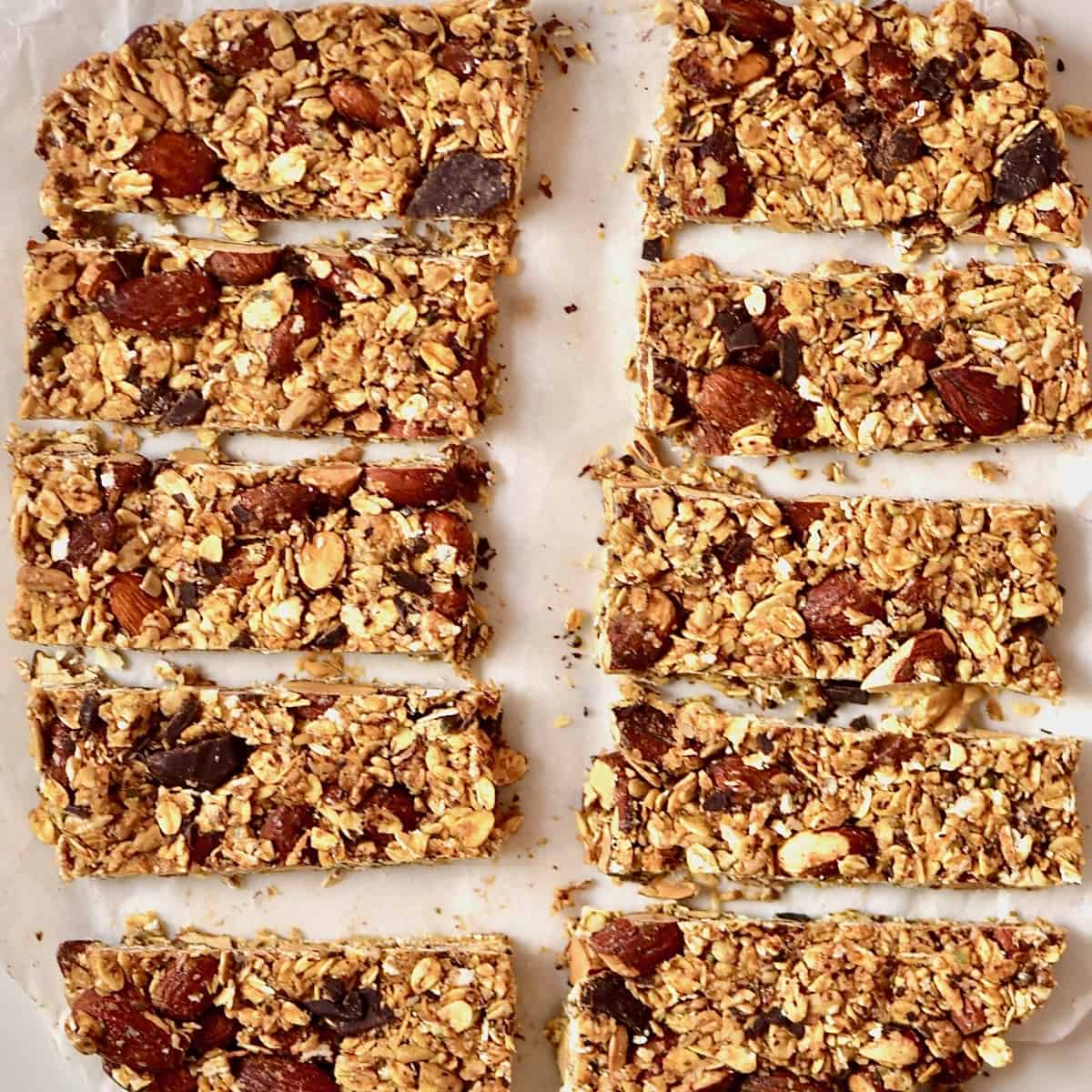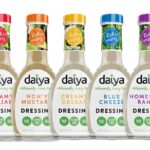Craving delicious, wholesome snacks without the worry of allergens? Imagine sinking your teeth into a perfectly textured, flavorful snack bar, crafted with care in your own kitchen, free from common allergens like gluten, dairy, and nuts. This guide empowers you to create a range of allergen-free snack bars, tailored to your dietary needs and preferences. We’ll explore ingredient substitutions, recipe variations, and baking techniques to ensure your homemade treats are both safe and satisfying.
From selecting the right allergen-free flours to mastering baking techniques that prevent sticking and ensure even cooking, we’ll navigate every step of the process. Discover how to adapt recipes for vegan, paleo, or keto diets, ensuring inclusivity for various dietary needs. We’ll also provide creative presentation ideas and packaging suggestions, making your allergen-free snack bars as visually appealing as they are delicious. Get ready to embark on a culinary adventure that prioritizes both taste and safety!
Baking & Storage Techniques
Creating delicious and allergen-free snack bars requires attention to detail, not just in ingredient selection but also in the baking and storage processes. Proper techniques ensure perfectly baked bars with a delightful texture and extended shelf life. This section details the optimal baking conditions and storage methods to maintain the quality of your homemade allergen-free treats.
Optimal Baking Temperature and Time
The ideal baking temperature for allergen-free snack bars generally falls between 325°F (160°C) and 350°F (175°C). However, the precise temperature and baking time depend heavily on the specific recipe and the type of pan used. Thicker bars will require longer baking times than thinner ones. For instance, a recipe using a significant amount of nut-free butter might require a slightly lower temperature to prevent burning, while a bar with predominantly dried fruit might bake faster at a higher temperature. Always monitor your bars closely during baking and use a toothpick or cake tester inserted into the center to check for doneness. A clean tester indicates that the bars are baked through. Overbaking can result in dry, crumbly bars, while underbaking leaves them gooey and potentially sticky. A good rule of thumb is to start checking for doneness a few minutes before the minimum baking time specified in your recipe.
Preventing Sticking and Ensuring Even Baking
Preventing sticking and ensuring even baking of allergen-free snack bars involves a combination of techniques. Properly greasing and flouring the baking pan is crucial. Using a silicone baking mat eliminates the need for greasing altogether and also aids in even baking and easy removal. Additionally, lining the pan with parchment paper, leaving an overhang on the sides for easy removal, provides a non-stick surface. Pressing the bar mixture firmly and evenly into the prepared pan ensures uniform baking and prevents uneven browning. Rotating the pan halfway through the baking time helps to achieve even coloration and prevent over-browning on one side. For recipes containing sticky ingredients, such as dates or honey, chilling the prepared pan in the refrigerator for 15-20 minutes before baking can help to firm up the mixture, preventing excessive sticking and spreading.
Proper Storage to Maintain Freshness and Prevent Spoilage
Proper storage is vital for preserving the freshness and quality of your allergen-free snack bars. These tips will help extend their shelf life and prevent spoilage.
- Store bars in an airtight container at room temperature for up to a week. This method is suitable for bars with a shorter shelf life, those with a higher moisture content, or those containing ingredients that are susceptible to spoiling more quickly.
- For longer storage (up to two weeks), refrigerate the bars in an airtight container. Refrigeration slows down the spoilage process and helps maintain the texture and flavor.
- Freezing is the best option for long-term storage (up to three months). Wrap individual bars tightly in plastic wrap or aluminum foil, then place them in a freezer-safe bag or container. This method prevents freezer burn and maintains the quality of the bars.
- Avoid storing bars in humid environments, as this can lead to mold growth and spoilage. A cool, dry place is ideal for storage.
- Always check the bars for any signs of spoilage, such as mold growth or an off-putting odor, before consuming them. Discard any bars that show signs of spoilage.
Dietary Considerations & Adaptations

Creating allergen-free snack bars opens up a world of possibilities for individuals with various dietary needs. However, careful consideration of specific requirements and potential cross-contamination is crucial for ensuring both safety and delicious results. This section details modifications for common dietary restrictions and provides practical strategies to minimize risks.
Adapting recipes to accommodate vegan, paleo, keto, and other specialized diets requires a nuanced understanding of ingredient substitutions and their impact on texture and flavor. Careful planning and attention to detail are key to achieving satisfying results while adhering to dietary guidelines. Cross-contamination prevention is equally important, especially for those with severe allergies.
Vegan Adaptations
Many traditional snack bar recipes rely on dairy and eggs. For vegan adaptations, replacing these ingredients requires thoughtful substitutions. Dairy can be replaced with alternatives like almond milk, coconut milk, or soy milk, while eggs can be substituted with flax eggs (1 tablespoon flaxseed meal mixed with 3 tablespoons water) or applesauce. Vegan butter or coconut oil can replace traditional butter. Always check labels to ensure ingredients are certified vegan and free of allergens. For example, a recipe calling for honey can easily be adapted using maple syrup or agave nectar as a natural sweetener.
Paleo Adaptations
Paleo diets emphasize whole, unprocessed foods and exclude grains, legumes, and dairy. Adapting snack bar recipes for paleo requires focusing on ingredients like nuts, seeds, dried fruits, and coconut flour. Traditional sweeteners like honey or maple syrup are acceptable, but quantities should be carefully adjusted to avoid overly sweet bars. For example, a recipe that includes oats can be modified by using almond flour or coconut flour as a substitute, providing a similar texture while maintaining the paleo guidelines.
Keto Adaptations
Ketogenic diets restrict carbohydrates and emphasize fats. Keto-friendly snack bars rely heavily on healthy fats, such as nut butters, coconut oil, and MCT oil. Sweeteners must be carefully chosen; erythritol, stevia, or monk fruit are suitable low-carbohydrate options. Protein sources, like collagen peptides or nut flours, contribute to satiety. A typical keto snack bar might include almond flour, coconut oil, cream cheese, and erythritol, carefully balancing macronutrients to stay within ketogenic guidelines. It’s crucial to carefully calculate net carbohydrates to ensure the recipe aligns with individual ketogenic needs.
Cross-Contamination Prevention
Cross-contamination is a significant concern when preparing allergen-free foods. Dedicated equipment and surfaces are essential. Thoroughly clean and sanitize all work surfaces, utensils, and equipment before and after preparation. Use separate cutting boards and bowls for allergen-free ingredients. Avoid preparing allergen-free snack bars in the same area where other foods containing allergens are being prepared. This minimizes the risk of accidental exposure and ensures the safety of the final product. Even a tiny amount of a specific allergen can trigger a severe reaction in susceptible individuals.
Adjusting Sweetness and Dietary Restrictions
Modifying sweetness levels and accommodating additional dietary restrictions requires careful experimentation. Start by reducing the amount of sweetener called for in the original recipe by 25%, tasting and adjusting as needed. For individuals with additional dietary needs (e.g., gluten-free, soy-free), substitute ingredients accordingly, always ensuring the final product meets their specific requirements. For example, a recipe that uses almond flour can be easily modified by substituting it with sunflower seed flour for those with nut allergies, or using a blend of flours for a richer flavor profile. The key is to carefully replace ingredients, maintaining the overall balance and texture of the snack bar. Remember to always double-check ingredient labels for potential allergens.
Making allergen-free snack bars at home isn’t just about avoiding allergens; it’s about taking control of your ingredients and creating personalized treats that nourish your body and delight your taste buds. By mastering ingredient substitutions, baking techniques, and storage methods, you’ll confidently craft delicious and safe snack bars perfect for any occasion. The journey of creating these bars empowers you to enjoy wholesome snacks without compromise, offering a delicious and healthy solution for mindful eating.
FAQ
Can I freeze allergen-free snack bars?
Yes! Freezing is an excellent way to extend the shelf life of your snack bars. Wrap them individually in plastic wrap and then place them in a freezer-safe bag or container.
What if I don’t have a specific allergen-free flour? Can I substitute?
Often, you can substitute one allergen-free flour for another, but the texture and taste might vary. Experiment with small batches to find your preferred combination. A chart comparing different flours is included in the guide to aid in substitution.
How long do homemade allergen-free snack bars last?
Properly stored at room temperature in an airtight container, they’ll typically last for about a week. Refrigeration can extend their shelf life to around two weeks. Freezing allows for even longer storage.
Are all allergen-free ingredients automatically vegan?
No. While many allergen-free ingredients are vegan, always check the ingredient list to ensure the product doesn’t contain any animal-derived components.


